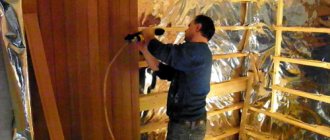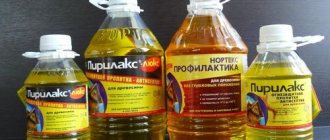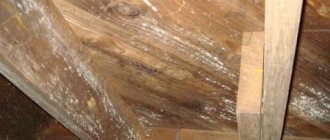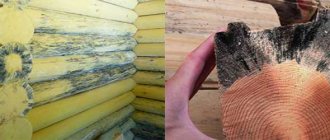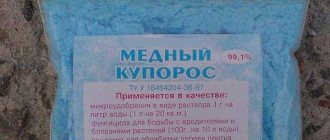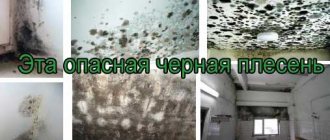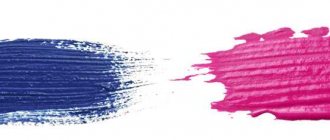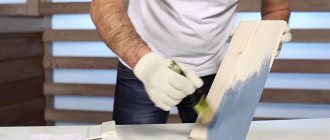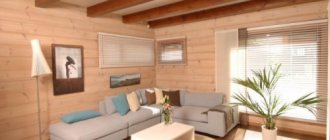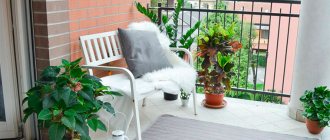Every sane man, living in an apartment and having a balcony, dreams of making it more comfortable. For these purposes, the most suitable option is to trim it with clapboard. After all, it is an environmentally friendly product that can breathe. Lining is a beautiful and durable material that is resistant to mechanical damage. However, it is made of wood, and wood without proper care and treatment very quickly becomes unusable. Therefore, it is very important to know how to cover the lining on the balcony and all the subtleties of its processing.
Processing lining on the balcony: what to choose
Lining is considered one of the most popular materials for finishing balconies. It is durable and resistant to damage. Despite this, the material needs additional protection, which will help prevent premature destruction of the tree. A fairly common question is how to treat the lining on the balcony. Today there are a large number of coatings that will help change the appearance of a balcony or loggia. Additional impregnation for lining on the balcony is easy to apply and lasts a long time, which helps prevent premature wear of the material.
Preliminary preparation
Lining, despite all its advantages, has some flaws. This finishing material is made of wood, and it is known to be poorly protected from attack by fungi, mold and various insects. Therefore, before covering the walls on a balcony or loggia with clapboard, you should prepare it. Special means are used for these purposes - this is impregnation for lining. It is able to protect the tree from all pests and maintain a beautiful appearance on the balcony. This product must be used to saturate the material on all sides. Particular attention should be paid to grooves and other irregularities. After letting the wood dry, you can cover the interior of your balcony or loggia. If the lining impregnation was used correctly, then you can forget about repairs for several years or even decades.
You can also use various antiseptics. These substances can also be used to coat the surface of the lining. Antiseptics form a film that prevents fungal and mold spores from entering the wood. In addition, this film protects the surface from environmental influences. By using antiseptics, you don’t have to worry about the appearance of the lining on the balcony. She will not be afraid of moisture and sunlight. The lining will not change its color and will not begin to rot for many years. Antiseptic film can be either completely transparent or translucent. The second option will only emphasize the texture and color of the wood. Only after protecting the lining from all harmful influences and pests can you think about how to paint it.
Advantages of lining processing
Advantages of additional treatment of lining with protective compounds:
- preventing the formation of rot, mold, pests;
- protection from the negative influence of the external environment - dirt quickly gets into scratches and is difficult to remove;
- protection from moisture and weather conditions;
- decorative properties - the right shade will help refresh the balcony.
Features of choice
Many people don’t know how to paint the lining on the balcony. When choosing a suitable composition for processing lining on a loggia, it is recommended to take into account the operating conditions of the material. A balcony cannot always be classified as an outdoor space, especially if there is glazing. In such cases, when finishing, it is allowed to use solutions for internal cladding.
Unglazed balconies must be treated with façade compounds that will provide reliable surface protection.
In addition to varnishes and paints, when treating loggias, antiseptic agents and compositions that are resistant to fire are used.
Design features of the balcony
If the balcony is well insulated, then it can become a full-fledged living room
The first condition taken into account when choosing paints and varnishes is to assess the position of the surfaces being treated - whether they are located outside or inside the room. The apparent obviousness of the answer, since the balcony is located behind the outer surface of the building wall, can be misleading.
If the balcony space is completely isolated from atmospheric influences by a fencing belt and glazing, then it is permissible to consider it as an internal space of the home and use appropriate materials.
Preservation of the original design, in which the facade wall of the house, the floor of the balcony and the inside of the fence are exposed to weather factors, which requires choosing from a different range of paint and varnish coatings intended for external use.
Varieties
The following coatings are used in wood processing:
- putties;
- primers;
- impregnation;
- water-based varnishes;
- alkyd varnishes;
- translucent antiseptics;
- opaque antiseptics;
- acrylic paints;
- oil paints.
Processing of lining on a loggia can be carried out in any way, but some nuances must be taken into account. Antiseptic compounds are absorbed into the lining several millimeters into the structure of the material. Translucent antiseptics help preserve the wood; they also highlight the texture of the lining, which makes its shade rich. Opaque compositions change the color of the coating and emphasize the texture of the wood.
Oil paints protect wood from fungus and moisture due to deep penetration into the wood structure.
putty
Construction stores offer a large selection of putties. The main advantage of the material is its low consumption. A small amount of the substance helps to plug all the cracks, a two-millimeter layer allows you to eliminate defects. When treating wood surfaces, it is recommended to use glue or oil-based compounds.
- basic - contains large particles; to achieve the effect, application is carried out in three layers;
- finishing - characterized by viscosity, liquid consistency, uniform application plays an important role.
When using the composition, it is recommended to use a spatula; the composition is placed in joints and gaps. At the final stage, treatment is carried out with a primer or antiseptic agents.
Impregnation
Impregnation consists of chemicals that penetrate deeply into the structure of the wood. The composition provides protection from external influences and has disinfecting properties. Impregnations form a film and help change the composition of the wood. The solution slows down the spread of fire during a fire, eliminating the possibility of damage to the material by pests and insects.
Fire retardants come in different fire resistance classes. When processing surfaces, brushes and spatulas are used. One of the most common application methods is spraying. Particular attention should be paid to applying the solution to edges and gaps. The ideal option is to apply the composition before installing the lining on the loggia, which will help avoid premature deformation of the wood.
Primer
The primer layer is applied to the lining before covering the surface with a finishing layer of paint or varnish. The substance is sold in solution and powder form. The primer mixture contains adhesive components that increase the adhesive properties of the material.
- The acrylic composition is intended for treating surfaces made of wood, concrete, and chipboard. The acrylic layer reduces the consumption of paint and varnish material that is applied on top of it. The organic composition provides anti-corrosion properties. Drying time reaches 1.5-6 hours.
- Alkyd composition has adhesive properties and is intended for treating steel and wood surfaces. The solution takes 20 hours to dry. When applying the solution, brushes or rollers are used. It is recommended to apply the composition in several layers.
Dye
Paint is used when processing lining quite rarely, only to eliminate noticeable defects. There are a large number of compositions for protecting lining. The most commonly used are water-based or oil-based. When applying the solution, a spray gun is used, which allows you to get a smooth surface without rolling or gaps. The oil solution takes longer to dry. After drying, the original shade of the coating changes.
Today there are a large number of types of varnishes for lining on the balcony from different manufacturers. The choice depends on preferences and financial capabilities.
Water based
It is recommended to use a water-based composition when treating the cladding of insulated loggias. The odorless solution is environmentally safe and has a short drying time. After drying, the coating takes on a beautiful matte shade that does not change over time under the influence of sunlight.
Acrylic based
The composition is characterized by increased durability compared to analogues. It contains organic components and dyes. Acrylic varnish is most often used for decorative purposes.
Alkyd
Alkyd varnish, despite its toxic properties, is in great demand. One of the advantages is the low consumption of the substance, so it is recommended to apply it in one layer. Complete drying may take up to 5 days.
Alkyd-urethane
Polyurethane varnish belongs to a separate category. It is available in two variations: one- and two-component. The first is intended for application to volumetric surfaces. It is recommended to use the composition very quickly due to the presence of a special hardener in the composition. The drying process takes up to 5 hours. Before using the varnish, it is recommended to consult a doctor.
An important role is also played by the question of how to cover the lining on the balcony and what tools to use. The right choice will help significantly speed up and simplify your work. When applying varnishes and paints, it is recommended to use brushes and rollers. They should be quite comfortable.
To apply each composition, you should purchase a separate brush, which will help save time on washing tools from the solution and improve the quality of work.
Wood processing materials
Paint is a very good means of protection. After all, it lies in a dense layer on the wood. Although paint may hide the structure of the wood, it is good for hiding minor defects. Experts carefully examine the source material before painting the lining on the balcony . The following types of paint are used for painting:
- Oil based paint. Made from vegetable oils. It is well absorbed into the wood and does not interfere with breathing. It also protects against the effects of all kinds of negative factors. Not subject to cracking. The main disadvantage of such paints is the very long drying period. It is also worth noting that dark shades can fade quickly, so it is not recommended to apply paint on the sunny side of the house. It is best to apply it to white lining on the balcony.
- Alkyd paints. As a rule, they are made on the basis of natural or synthetic drying oil. When applied and dried, it forms a good protective coating against moisture. It is also both dense and elastic. It does not crack and is practically not damaged by mechanical stress. It has a good level of protection against the effects of aggressive chemical compounds. Among the negative abilities, it is a very pungent smell. If working indoors, you should always use a respirator. This paint is also very demanding when it comes to its intended use.
- Facade paints. These paints are intended exclusively for exterior use. They have excellent durability and elasticity. The main disadvantage of such paints is the small selection of colors and shades.
Unlike paint, varnishes preserve the structure and appearance of wood. For these types of work, the following types are mainly used:
- Water-based varnishes, or scuba varnishes. As the name suggests, they are based on water. A very safe form of protective application. Dries very quickly and has no odor. It has various types of shades from colorless to exotic upon request, which gives rise to a lot of ideas for decoration. A huge disadvantage is the inability to protect products, unlike paints. It is for this reason that they are used exclusively for interior decoration.
- Varnish based on alkyd resins. Has excellent water-repellent properties. Resists frost well. It has good elasticity, strength and durability. Perfectly protects materials from mechanical damage. The downsides are a strong and unpleasant odor and a long drying time.
- Polyurethane varnishes. One of the best protection products for outdoor use. Since it is an excellent protector from moisture, frost and has very impressive durability. Varnishes are available both clear and tinted, which can give the wood shades of noble wood species. They have their own specific smell, which disappears after drying. It is for this reason that they are used for outdoor work. When deciding how to cover the lining on a balcony on the sunny side, this varnish will be the best answer.
- Acrylic. The base is acrylic. The safest type of varnish with excellent protection from ultraviolet rays and resistant to fading. For dilution, use an alcohol solution or plain water. Materials must be processed in two layers. The first is protective, the second sets the color basis.
Thus, to paint eurolining on a balcony and loggia, you need to use the paints and varnishes listed above. It all depends on the conditions and type of work. In addition, it should be remembered that the wrong choice of material can cause a wooden board or beam to darken.
Preparation
Before applying the product, it is recommended to prepare the surface, especially if the lining is old. To do this, the old coating is cleaned of dirt.
- Inspection of surfaces, search and filling of cracks, mother-in-laws. Any defects on the surface of wood are considered an increased source of danger, since they are a favorable environment for the proliferation of harmful microorganisms. If the crack is located on the outside of the loggia, there is a high risk of wind blowing. Wood putty allows you to disguise the most minor irregularities. Excess composition must be removed with a spatula.
- Sanding the dried surface - first the putty areas are treated, after which the rest of the surface is leveled. Applying effort will help you get a perfectly even lining.
- Cleaning the surface from dust - when carrying out work, it is recommended to use a vacuum cleaner turned on at maximum power. Alternatively, a brush or broom can be used. The goal is to remove dirt from the most difficult to reach areas.
Wood application technology
Before painting the lining on the loggia, you should familiarize yourself with the following rules for using the solution:
- Preliminary shaking of the composition will ensure uniform application of the paint or varnish layer. Some solutions require preliminary dilution, for which it is recommended to use special tools. Compliance with the requirements will help achieve accurate color and uniform consistency.
- Painting should be carried out in thin layers; it is recommended to remove excess solution from the brush in a timely manner.
- The next layer should be applied after the previous one has completely dried.
- You should check the shade and consistency of the paint on a small area of the wood in advance.
- The composition is not recommended to be applied to the gaps of the lining, which will provide air access to the material. Areas untouched by paint can always be hidden under a decorative baseboard.
- The painting time should be planned so that any interference is eliminated.
Compliance with the rules and technologies will help ensure reliable protection of the lining on the balcony from the harmful effects of the environment and will extend its service life. When caring for lining treated with different compounds, you should refrain from using detergents containing acrylic acid and chlorine.
How to choose the “right” composition
The decisive factor in choosing the right substance should be the conditions under which the cladding will be used. Despite the fact that the balcony is located on the facade of the building, it cannot be clearly attributed to the external premises. If glazing is installed, the cladding is reliably protected from precipitation, sudden changes in humidity and temperature. In this case, it is possible to use solutions intended for interior work.
If there is no glazing or it is of insufficient quality, the surfaces are exposed to adverse atmospheric factors. They must be treated only with preparations for external work that have the best protective characteristics. In any case, in addition to paint or varnish, impregnations are also used, giving the material different properties. For example, resistance to fire, rotting, moisture, etc.
Deciding how to cover the lining on the balcony
Balcony covered with wooden paneling and varnished
The balcony is the most important place in the apartment. Some people have a winter garden or greenhouse there, some have a recreation room or a mini-cinema, and some have a storage room. Be that as it may, at one point each of us thinks about bringing the balcony into divine shape. One of the points in achieving the intended goal is lining brick walls with clapboard. After finishing the facing work, the question naturally arises - how to cover the lining on the balcony?
What to cover
Color palette. I recommend the colorless option.
This issue is especially relevant for ordinary untreated lining, since euro-lining goes on sale with ready-made antiseptic impregnation.
How to treat lining on a balcony in order to maintain the quality of the cladding for a long time?
Recommended sequence of work:
- treating all surfaces of the finishing material with an antiseptic;
- drying;
- primary processing;
- applying the final varnish layer after installation.
The main coating materials are considered to be various types, the composition of which varies depending on the requirements for the quality of the coating and the intensity of the load on the cladding.
It is customary to distinguish:
- water-based varnish
- more stable acrylic , protecting the wooden surface from moisture and low temperatures. Alcohol and alcohol-containing liquids are used as a solvent;
- moisture-resistant alkyd , forming a high-strength polymer layer with increased mechanical strength. The main purpose is use in humid climates;
- even more resistant polyurethane varnish used in regions with harsh climatic conditions. The main disadvantage is the release of toxic substances, necessitating the use of protective equipment during surgery.
In addition to varnish coating, the lining is also painted with various dyes. The best option for wooden textures are water-based paints, as well as stains or stains.
Thickly ground alkyd dyes with a high content of solid pigment are characterized by high frost resistance.
But it is not recommended to use oil paints, as they penetrate too deeply into the wood structure and make re-processing difficult.
Video - painting the lining to make it look stylish:
Types of lining
To answer this question, it’s worth understanding what kind of lining there is. It can be Russian and foreign, that is, European. Which one you prefer is up to you. Russian is undoubtedly cheaper. Foreign ones are more expensive, but their quality is much higher. In addition, special grooves or grooves are made in it on the back side, along which the resulting condensate can flow, which is not the case with domestic material.
Note! Russian manufacturers often sin by making linings from wood that has not been dried. As a result, after cladding, after some time, the wooden slats dry out and shrink naturally, and cracks form between them. Therefore, if you decide to work with Russian lining, you need to carefully choose the manufacturer and material.
Lining also differs in application - it is used for external and internal cladding. For exterior work, it is best to use coniferous material, since the wood practically does not rot and resists moisture well. Of the deciduous trees, only aspen is suitable. But for interior decoration, any coniferous wood is suitable, and for hardwood - linden, oak and ash lining.
Some manufacturers, trying to make the material cheaper, use spruce and birch. But you need to be careful with them, because they quickly begin to rot in high humidity, that is, they are not suitable for outdoor use. As you know, there are no central heating radiators on the balcony. Therefore, it will be very cold there in winter, humid in spring and autumn, and only dry and hot in summer.
Important! The best material for conifer lining is larch. It practically does not rot, but it is also quite expensive. Therefore, pine remains the best option, from which most types of lining are made. This tree has a straight trunk and a minimum of knots, which is why high-quality, and at the same time quite inexpensive, slats are obtained.
If finances allow, you can line the balcony with linden or alder clapboard. This material is beautiful and practically does not release resin when heated. Finally, the balcony cladding is finished, all construction debris and sawdust are removed, and wet cleaning is done. What's next?
Lining covering
As a rule, any wood darkens over time, which means it needs to be covered with something - varnish or paint. The main thing is to protect it from external influences. It is always more humid on the balcony than in the apartment, therefore, you cannot do without an antiseptic.
Consider varnish coating
A specialist coats the lining with varnish
- The first thing we use to coat the lining on the balcony is an antiseptic. Before this, it is necessary to sand it with soft sandpaper, thus cleaning it from possible dust and dirt, but without damaging the natural grain of the wood or scratching it.
- The next stage is the first and then the second layer of antiseptic. Each one needs to be allowed to dry thoroughly. Minimal moisture protection is ready.
- We prime the surface. If there are chips or deep scratches somewhere, the primer will hide everything and make the surface perfect.
- Now it's the turn of the varnish. It is better to cover the material with two layers of colorless. However, if the lining looks cheap, you can cheat and make a tinted varnish to make the wood look richer due to the color. Apply the second layer of varnish only after the first has completely dried. Otherwise, bubbles are guaranteed.
What varnishes can be used to coat lining
The varnish adds shine and changes color
- If the balcony is glazed, a water-based varnish is quite suitable.
- But a much better effect will be achieved when using acrylic varnish. With its help, our lining will receive excellent protection from both moisture and sunlight.
- Alkyd varnishes. They have several disadvantages - they smell sharp and take a long time to dry. But there are also significant advantages. The surface after this varnish is very difficult to scratch, so it perfectly protects the wood from moisture.
- Polyurethane-based varnish is the best choice for the lining with which the balcony is lined from the outside. Despite its toxicity (you need to work with it outdoors with a mask and gloves), it:
- frost-resistant
- moisture resistant
- protects against ultraviolet radiation
- dries well
Recommendations for choosing a coating for lining
We've figured out the painting options, but what's best - all experts have different opinions. Some people prefer various varnishes, others lean towards stain, and still others claim that there is nothing better than special paint. The first thing you should pay attention to is the environmental friendliness of the material. Before painting the lining, you should find out about the safety of the varnishes or paints that you decide to use, because some materials are recommended for use only for exterior work. They may contain harmful substances that can evaporate under the influence of the environment, and such vapors are not at all needed on the balcony. After all, here you can gather with your family to drink tea or relax on a summer evening, so it is better to use materials intended for indoor use.
In addition, you need to consider the overall design of your apartment. You should not paint the walls on a balcony or loggia in a color that will strongly contrast with the overall color scheme of the entire house. Also, the environmental friendliness of wood is determined by the presence of pores through which the wood “breathes.” If you use some paints, the pores will no longer perform their functions. That is why experts are more inclined to varnish the material on the balcony.
The wood itself has a pleasant and beautiful color, and if it is coated with translucent antiseptics, this will only emphasize the beautiful texture. Therefore, unless there is an urgent need, the lining does not require any other painting. It is enough to cover it with an antiseptic and protect it with transparent varnish, and the walls on the balcony will delight you with their beauty for a long time.
Of course, experts do not recommend leaving the finishing material completely uncoated. Wood needs protection from environmental influences. Various antiseptics and varnishes are perfect for these purposes. They form a transparent or translucent layer that will only highlight the texture of the wood. The lining may darken over time, this is another argument in favor of painting. But this problem can be solved with the help of special wood bleaches; with their help, you can easily restore the natural color.
How to cover the lining on the balcony?
In order for the lining to serve longer and maintain an attractive appearance, it must be coated with a special compound. Thanks to the coating, the material is reliably protected from mold and rot, ultraviolet radiation, fire, and is more resistant to mechanical damage. After installation, stain, antiseptic, drying oil, protective impregnation, and then a varnish layer are usually applied to the carriage board.
- Water
. Eco-friendly, safe, neutral smell. Dries quickly and does not cause allergies. It is durable. Suitable for glazed balconies and loggias. - Alkyd.
Can be used in any climate. Forms a water-repellent film on the material and protects it from scratches and dents. It smells strong. It takes a long time to dry. - Acrylic
. Does not contain volatile chemicals. Attracts with a variety of shades and an affordable price. The varnish is diluted with alcohol or water twice: the first time for a protective layer, the second time for the desired decorative shade. Reliably protects surfaces from ultraviolet radiation. - Polyurethane
. Resistant to frost, high humidity, durable. However, it contains toxic substances and is suitable for outdoor use.
Varnish for lining helps to preserve the natural appearance of wood and make cladding made from cheap boards more attractive. Acrylic, polyurethane, water-borne, alkyd are used indoors, alkyd and polyurethane are also used outdoors.
Selection of protective composition
Various processing materials that are applied to wood not only protect it, but also improve its appearance. After all, when using various paints and varnishes, you can make works of art from lining with your own twist.
Before treating the lining on the balcony, experts pay close attention to the appearance of the object. Depending on whether it is glazed or unglazed, the choice of composition is made. If the balcony is glazed and protected from external factors such as rain, snow and sunlight, then you can use solutions for interior wood finishing. Well, if it is open, then it is treated with solutions for external treatment. It is also important to treat the wood with a fire-retardant material and a rot-preventing agent.
Paints
The lining is often decorated with varnish rather than paint. Coloring is used to hide material defects and create the necessary accents in the design. Painted wood loses its natural appearance. On loggias covered with carriage boards, it is better to use paints:
- Oily.
They are perfectly absorbed, reliably protect the surface, and allow the wood to “breathe.” The material they process is resistant to the negative influence of the environment. The paint layer does not crack, but dries in at least 7 hours and stops sticking within a few days. - Thick alkyd
. They are produced on the basis of drying oil and are diluted with it to the required consistency. A frost-resistant film is formed. It is not prone to cracking or deformation.
- Facade
. Elastic and durable, easy to apply. But there are fewer shades in their palette compared to similar paints.
Before finishing the balcony with clapboard, it is a good idea to choose a suitable paint and varnish material for the covering. When choosing, you need to take into account the climate, the safety requirements of the compositions, the condition and type of cladding. Compositions containing toxic substances are applicable outdoors.
Impregnations
This is the name given to protective compounds that penetrate deeply into wood. What is the best way to cover the lining on the inside of the balcony?
- Stain.
An effective, inexpensive and simple means for protecting carriage boards from climatic factors and material fading in the sun. Supplied in the form of a semi-finished product (gel, powder) or solution.
- Wax impregnations are
a reliable barrier to rot and mold. They form a thermal protective film, making the surface matte or glossy.
Tools and specifics of work
What varnish or paint to cover the surface of the lining is up to you to decide. As a rule, the choice depends on individual preferences, price and environmental friendliness of the composition. To process the lining yourself, you can use the following materials and tools:
- high stepladder;
- brushes, roller, convenient paint tray;
- safety glasses - when using a spray gun;
- optimal container for dyes;
- antiseptic;
- varnish or paint;
- construction skin.
Step-by-step recommendations
Balcony made of lining, varnished
- After preliminary work on cleaning the lining from various contaminants, sand its surface with special construction sandpaper: during the installation process, unevenness and nicks may have appeared that need to be removed.
- Apply antiseptic. The applied layer should dry within 24 hours.
- Cover the lining on the balcony with a special varnish or paint. Use a spray gun or, for example, a brush and roller for this. Cover the lining with the thinnest and even layer, without streaks.
- Go over the roughest areas resulting from drying of the first layer with sandpaper.
- Treat the surface with a second layer and let it dry.
When working with chemicals - varnishes, paints, impregnations - take special precautions: use safety glasses and thick gloves, ventilate the room. Read the instructions before using a particular product.
Tip: Painting work is best done on a windless and sunny summer day. In this case, the coating will dry evenly and on time.
How and with what to treat the lining on the balcony with your own hands?
- Prepare everything you need.
- Treat the surface
. Carefully inspect the casing; sand worn or uneven areas, removing cracks and chips. Whiten dark areas using: - hydrogen peroxide
- for walnut, beech, birch boards; - solution of peroxide and ammonia
- for ash boards; - oxalic acid solution
- for linden, maple, oak.
Rinse the treated surfaces with warm water, dry, cover with an antiseptic, and dry again.
note
! It is better to treat the cladding of the loggia with antiseptic solutions at the stage of its installation, before the protective composition is applied.
- Apply paint and varnish
. Proceed step by step: - Apply masking tape at the joints of the lining being processed with adjacent surfaces to avoid leaks;
- Start coating one of the corners with varnish or paint, then continue working around the perimeter. The brush should be used crosswise to better saturate the wood, and the roller should be used in two opposite directions. The spray gun helps create an even paint layer.
- Paint the grooves with a narrow brush.
- Wait until the single layer coating is completely dry.
- Inspect and sand the surface if necessary.
- Apply a second coat of coating and wait for it to dry. It is better not to touch a board treated with any means 2–3
days.
A high-quality coating will extend the life of the lining, protect it from moisture, scratches, ultraviolet radiation, fungus, pests, and give the material an attractive appearance.
By the way, in the previous article
We told you how to measure windows correctly.
Put "Like" and subscribe to the channel!
"Windows of Moscow" - quality guarantee from the official partner of REHAU
Why do you need to cover the lining with paints and varnishes?
On the balcony there are unfavorable conditions for the use of wood: high humidity and changes in air temperature. Therefore, it is recommended to use protective equipment. Processing the lining extends the life of the tree and makes it decorative
You can use transparent impregnations and varnishes that highlight the natural grain of the wood, or pigmented paints. To improve the performance characteristics of the lining, it is recommended to apply antiseptic, moisture-resistant or fire-resistant impregnation (it will protect against mold and reduce the flammability of the material - increasing fire safety).
Impregnations
Impregnation for lining is a special composition that creates a protective layer on the surface of the wood. It is used as an independent coating or in preparation for painting. Impregnation can have several functions:
- decorative – gives the tree a certain tone;
- antiseptic – prevention of the appearance of bacteria and fungi (including mold);
- insecticidal – protection against insects;
- fire retardant - reduces the flammability of the lining;
- water-repellent - prevents moisture from penetrating into wood fibers.
Application procedure
Before treating the lining on the balcony with paints and varnishes, it is necessary to prepare it for this procedure. You should approach each stage responsibly: the service life of the wood and the decorativeness of the coating directly depend on the quality of their implementation.
Each means for processing lining has its own technical characteristics and application features. Therefore, before starting work, you must read the instructions from start to finish, and then adhere to the rules specified in it. Particular attention should be paid to the “Safety Precautions” section.
Preparation
If the coating is applied to an old, already nailed lining, then it will need to be cleaned of the old coating or dirt. Then you need:
- Carefully inspect the surface and look for any cracks or crevices that may have appeared during the service of the lining. They are thoroughly puttied: any recesses are a potential “breeding ground” for pathogenic microorganisms and pests, and if the crack is on the outer wall of the balcony, cold wind will blow into it. It is recommended to use a special wood putty - it will hide even minor irregularities. After applying to problem areas, excess mass is carefully removed with a spatula.
- Sand after the putty has dried using sandpaper with a small grit: no more than P. First, only the putty areas are treated, and then (if desired) the entire rest of the surface is sanded. If you try and spend enough time, you can get an almost perfectly smooth lining.
- Clean the wood from dust. The easiest way is to use a vacuum cleaner turned on at maximum power. Alternatives are a broom or brush. It is important to remove all dirt, including in hard-to-reach corners and at the joints of boards. Dust and pieces of wood caught in the paintwork will make it uneven.
Now you can proceed to applying an antiseptic, if necessary.
Impregnations: creating an antiseptic and fire-resistant layer
Antiseptics protect wood primarily from fungi. Of these, the biggest headache is caused by mold, which loves to settle in cool and damp rooms, which include the balcony.
Antiseptics are divided into 2 types:
- Glazing. The translucent texture emphasizes the pattern of wood fibers and traces of knots and tints the lining.
- Covering. They completely cover the texture of the board and come in different colors.
Builders recommend applying an antiseptic layer before nailing the boards in order to treat them on both sides. But covering one side of the lining will also bring a lot of benefits, reducing the risk of mold appearing on the balcony.
Most antiseptics also produce a fire-resistant effect, which increases the safety of using the lining. In case of fire, it will not burn intensely. Double action products are also called “Biopyrenes”.
All types of impregnations are applied using a brush. If paint is applied in the future, a primer will also be required.
Application of the base coating
Coating the lining is a simple process. But it requires accuracy, attentiveness and adherence to technology. The most suitable conditions are air temperature 10–30 °C and low humidity: up to 40–60%. If it is damp or has recently rained, it is recommended to reschedule the work because the applied layer will not adhere well.
Processing of lining takes place in 4 stages:
- Preparation of the product. It is described in detail in the instructions for use. Usually it is enough to mix the composition with a stick so that its consistency becomes homogeneous. If it is too thick, some paints and varnishes can be diluted with warm water (but its volume should not be more than 10% of the total) so that the layer of paint or varnish lays down easier and more evenly.
- For the application itself, you need to use a high-quality brush with long and thick bristles. It is not permissible for the fibers to fall out when pressed. The products are applied along the wood grain, section by section, trying not to create sharp transitions between shades.
- You need to separately brush the corners and recesses between the boards.
- Wait for the first layer to dry (from 3 hours or more - depends on the type of coating) and, if necessary, apply a second one.
Paint and varnish materials are distributed evenly over each board, leaving no empty areas. After completing the work, it is better to play it safe and once again inspect the walls of the balcony under bright lighting to detect possible defects.
Description of the painting process
To make it easier for you to understand the topic, we have divided it into 2 parts:
- Preparatory activities;
- Applying paint.
Both steps are simple, but require some knowledge. Therefore, carefully read all the information below in order to thoroughly understand the topic and carry out the work efficiently.
Colors can be combined if desired
Stage 1 – preparation
As part of this stage, a number of activities need to be carried out:
Everyone will find the optimal shade for themselves, the range is very large
Important! When buying paint, always buy with a small reserve, so that you don’t end up with just a little bit of paint left unpainted.
- Puttying. If there are significant unevenness and cracks on the surface, be sure to purchase putty. It can be any color, but the surface will still be stained and the repair areas will not be visible. Please note that a different technology is used inside the sauna;
It is also better to choose an acrylic-based composition for repairs.
- Surface preparation begins with cleaning it and a general assessment of its condition. If there are stains on the surface from bitumen or other difficult-to-remove compounds, they must be removed with special means;
- If there is damage to the lining, then it must be puttied. To do this, take a narrow steel spatula, apply a small amount of the compound on it, and all irregularities are carefully sealed. Remove excess putty immediately so that you don’t have to spend a long time removing it with sandpaper;
It is most convenient to carry out puttying work before painting with a narrow spatula
- Grinding. After the composition has dried, it is necessary to level the surface in the repair areas to perfect condition. To do this, take sandpaper with a grain no larger than P240. You can work either manually or using a special grater, it all depends on the volume of work;
- If necessary, poorly treated areas in other places are sanded; the better the lining is prepared, the better the final result will be;
Fine sandpaper quickly removes all surface imperfections
- Cleaning from dust. After sanding, be sure to clean the surface from dust. This is done with a brush or broom, but it is best to take a vacuum cleaner and go through it. It is important to remove fine wood dust so that when painting it does not spoil the surface;
- Application of primer. Before painting the lining on the balcony, it is necessary to apply primer to the surface. Any composition based on acrylic or alkyd that can be used for wood is suitable for the job. Just apply it in a thin layer without smudges and wait for the surface to dry completely (this takes from 2 to 12 hours).
The primer reduces the absorption of the base and improves paint adhesion
Stage 2 – painting
Instructions for doing the work yourself look like this:
- Mix the solution. First you need to open the package of paint and mix it thoroughly. During storage, individual components settle, and if the composition is not stirred, the coating will be uneven;
- We dilute to condition. If the consistency is too thick, then a solvent or water is added to the composition, which is suitable in your case, depends on the type of paint used, all information is on the label. See Tikkuril's article for lining;
Important! Remember that paint can be applied at temperatures from +5 to +30 degrees. Air humidity should not be high.
- Working with a brush. For work, use a brush with thick, long bristles. The composition is applied along the wood fibers. This method of distributing the composition allows you to get rid of streaks and reduces the likelihood of smudges. It is best to work from top to bottom, so you can easily remove smudges even when they occur;
Apply paint carefully. Smudges greatly spoil the appearance of the lining
- Drying. Next, you need to wait until the composition dries completely, this takes from a couple of hours to a day, depending on the temperature. The second layer is applied in a similar way; it provides more reliable surface protection. It is important to be careful here, as flaws cannot be removed.
If you have a spray gun, you can use it. This application option provides more even coverage. But when working, you need to use protective equipment to avoid inhaling fine dust.
Painting with a spray gun is done in a respirator
